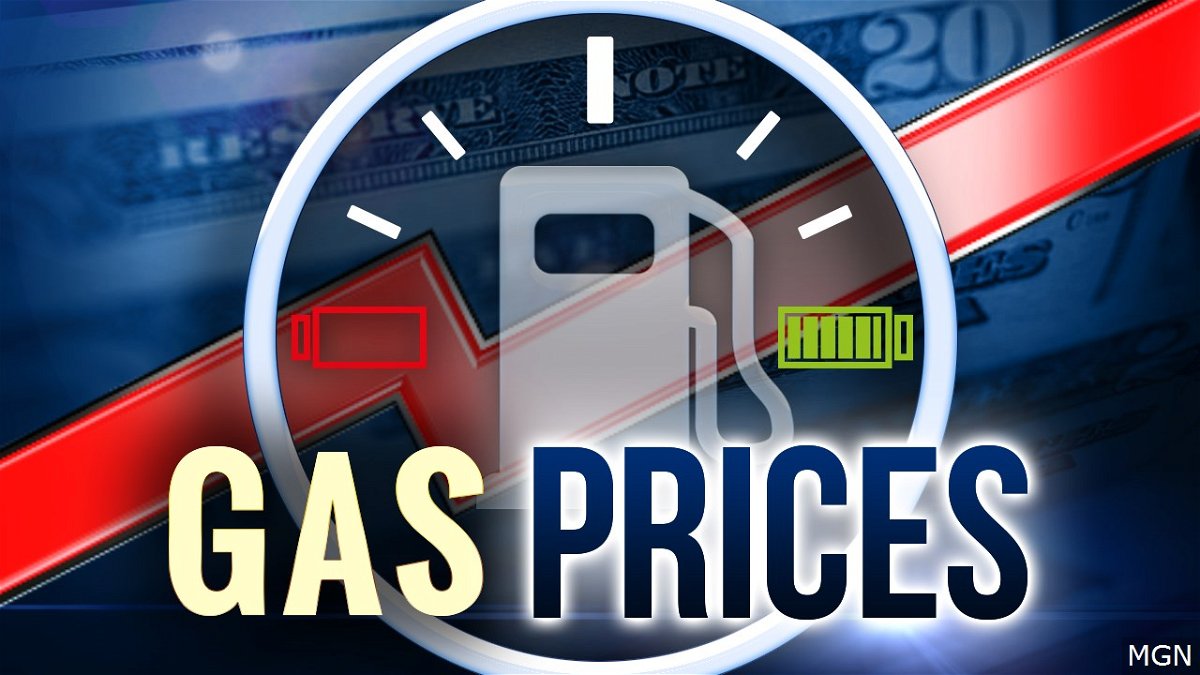Gas prices dropping despite busy holiday travel

IDAHO FALLS, Idaho (KIFI) – Despite rising gasoline demand as more than 109 million Americans, including 593,000 Idahoans, prepare for a holiday getaway, market uncertainty surrounding the COVID-19 omicron variant is tamping down the price of crude oil and causing gas prices to fall in the run-up to Christmas.
On Tuesday, Idaho’s average price for regular is $3.61 per gallon, which is a penny less than a week ago, eight cents less than a month ago and $1.39 more than a year ago.
The Gem State ranks 8th in the country for most expensive fuel.
Here’s a look at other gas prices from around the state: Boise - $3.71; Coeur d’Alene - $3.31; Franklin - $3.57; Idaho Falls - $3.50; Lewiston - $3.36; Pocatello - $3.65; Twin Falls - $3.71
You can find the lowest gas prices in the area HERE.
The national average currently sits at $3.30, which is two cents less than a week ago, 11 cents less than a month ago and $1.08 more than a year ago.
U.S. gasoline demand recently jumped to 9.5 million barrels per day – a five percent increase in the last week – with even more demand expected over the holidays. Crude oil stocks are 14% below last year’s levels. Normally, both factors would put upward pressure on gas prices. But uncertainty about the future demand for crude has lowered its price, along with prices at the pump.
“None of us are thrilled when we stop to fill up these days, but at least the lower prices make it possible for more families to take a holiday vacation,” AAA Idaho spokesman Matthew Conde said. “Depending on the impact of the omicron variant, the prices of crude oil and gas may teeter-totter through the end of the year.”
Here’s a seven-year retrospective on Christmas Day gas prices:
| YEAR | U.S. | IDAHO |
| 2020 | $2.25 | $2.22 |
| 2019 | $2.55 | $2.71 |
| 2018 | $2.31 | $2.61 |
| 2017 | $2.44 | $2.55 |
| 2016 | $2.29 | $2.26 |
| 2015 | $2.00 | $2.13 |
| 2014 | $2.33 | $2.31 |
The West Texas Intermediate benchmark for crude is currently trading near $70 per barrel, which is $7 less than a month ago and $22 more per barrel than a year ago.
AAA says the busiest times on the road will be December 22 and 23, and the busiest day at the airport will be December 23. Nearly 28 million more people will travel this year than a year ago.
At this time, the CDC has not changed its guidance regarding travel or holiday gatherings due to the omicron variant. But travelers should take the necessary precautions to keep themselves safe.
Masks are required at airports, on airplanes, and at train and bus stations. Strict U.S. guidelines also require all inbound international travelers, regardless of nationality or vaccination status, to present a negative COVID-19 viral test result within one day of departure for the United States.
Use hand sanitizer and disinfectant wipes to clean high-touch surfaces on planes and in hotel rooms. Some hotels have adjusted their dining and housekeeping services – check with your hotel for more details. To learn more about AAA Inspected Clean designations, visit AAA.com/Diamonds.
Drivers can also review the AAA COVID-19 Travel Restrictions map for the latest information, and for additional peace of mind, plan and book trips with the help of an experienced travel agent.
Driving tips for the holidays
- Bring your emergency kit. Food, water, a first-aid kit, a flashlight with extra batteries, blankets, basic tools, and flares or reflectors all come in handy during a vehicle disablement. Use a collapsible shovel, sand or kitty litter, or even a floor mat to resolve loss of traction.
- Make a plan and share it. Check the weather forecast and traffic cameras for the route you’ll be taking, then share your plans with loved ones who can act if you fail to arrive.
- Watch for ice. Be extra careful on curves, hills, shaded areas of the road, and bridges.
- Consider the skill level of drivers around you. Be patient and keep it friendly.
- Keep kids entertained. A shower caddy from the dollar store can hold meals and other items, and a cookie sheet with magnets can serve as a quick and easy drawing surface.
“If you’re heading into remote parts of the state, please remember that potholes and downed tree limbs are a common occurrence,” Conde said. “Take it slow and easy, and actively scan the road for tell-tale signs of trouble, like brake lights or skidding from other cars. Just because a road is familiar to you doesn’t mean that it can’t present a few challenges this time of year.”






